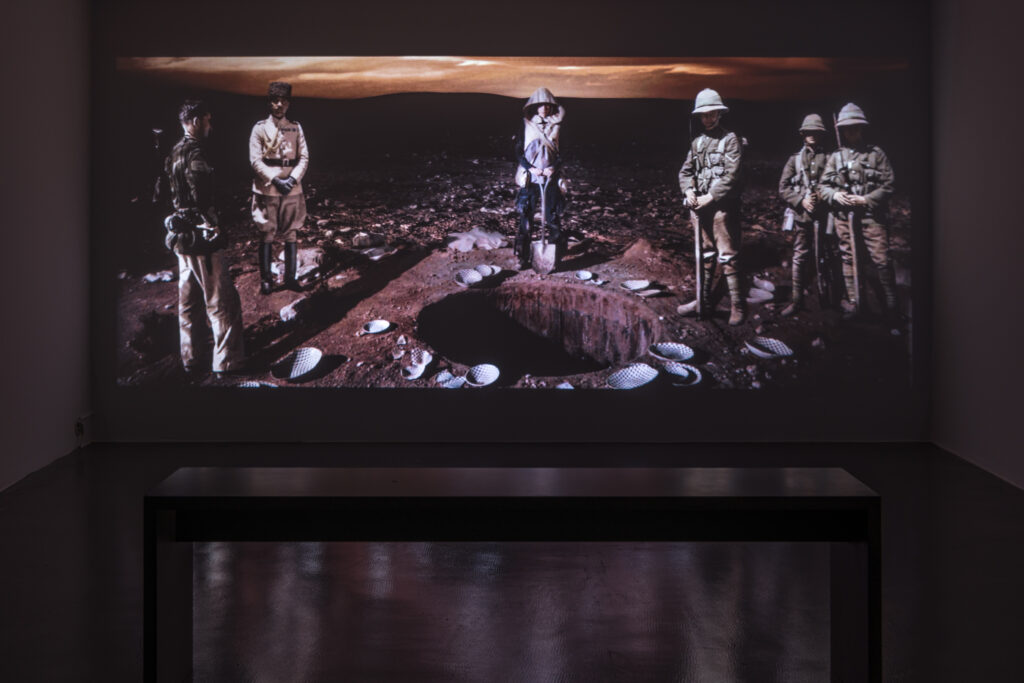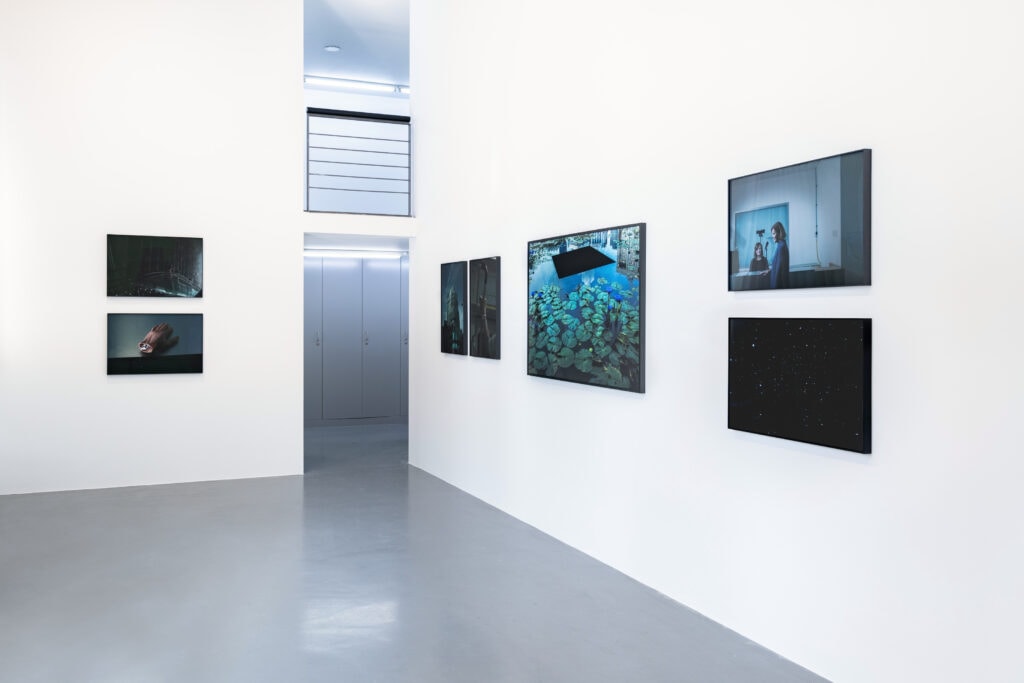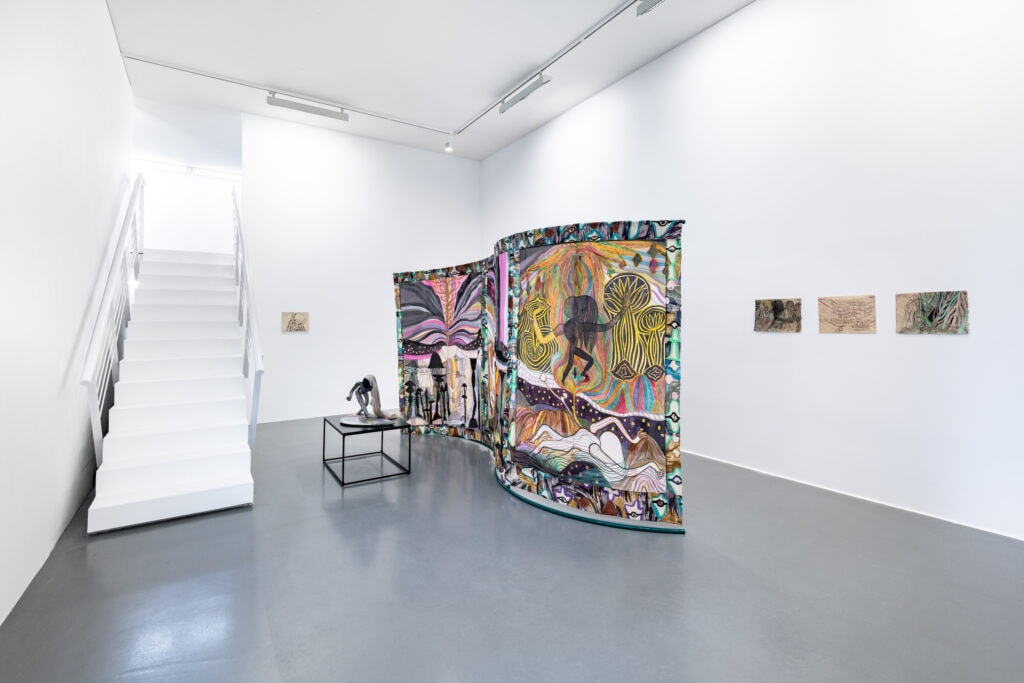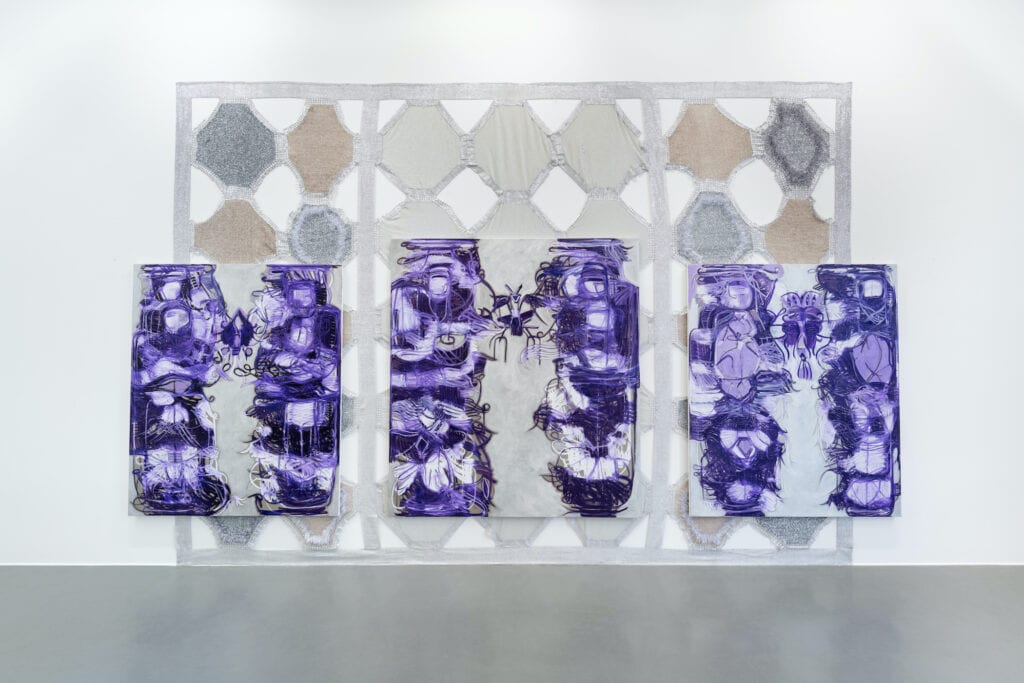Kunstverein Friedrichshafen presents a group exhibition with Melike Kara, Larissa Sansour & Søren Lind, Julia Steinigeweg and Emma Talbot under the title Visions or Waking Dreams.
Science, facticity and empiricism are the foundations of every enlightened, modern society. But what happens when, despite all rationality, it is no longer possible to make universally valid statements about the totality of the world?
“To romanticise the world is to perceive it as a continuum in which everything is connected to everything else. Only through this poetic act of romanticisation does the original totality of the world become foreseeable and communicable as its actual meaning in the work of art.”
This statement by Novalis is programmatic for the artists of the exhibition
With Melike Kara, Larissa Sansour & Søren Lind, Julia Steinigeweg and Emma Talbot, Visions or Waking Dreams brings together artists who reflect on the past and the present to imagine their unrealised possibilities and potentials. Their works capture the sensually experienceable world and bundle its essence as well as the things, events and actions that constitute it. Thereby, conveying a kind of world-perception which enables a poetic and perhaps even a holistic grasp of the world in the first place.
Visions or Waking Dreams
Recurring themes in Melike Kara’s paintings and installations are interpersonal communication and the question of how individual and collective stories are told, and identities are constructed. While her earlier paintings used a figurative formal language, the boundary to abstraction in her more recent paintings is visibly blurred. As a result, only scattered silhouettes can be glimpsed here and there. These formal characteristics are an expression of the Kara’s ongoing preoccupation with consciousness, identity, and her own Kurdish-Alevi roots. She draws from her personal archive, which she has compiled over the years from various sources, and which attempts to document and preserve the history and traditions of the stateless Kurdish people through photographs, memories and narratives of events, myths, and rituals. Melike Kara vehemently opposes forgetting and creates a poetic historiography that focuses on the personal and individual rather than the collective.
Larissa Sansour is a Palestinian artist whose practice repeatedly uses elements of pop culture and science fiction to address political and social issues and to illuminate the complex realities of life in Palestine and the Middle East. Her multimedia work includes sculptures, photographs, and installations. She also creates visually powerful films for which she collaborates with the screenwriter, director, and writer Søren Lind. Their joint film In the Future They Ate From the Finest Porcelain (2016) explores the field of tension between science fiction, archaeology and politics and examines the role of myths for history, for facts and for the formation of national identity. It tells of a resistance group creating underground deposits of elaborate porcelain – suggested to belong to an entirely fictional civilization. Their aim is to influence history and support future claims to their vanishing lands. Once unearthed, this tableware will prove the existence of this counterfeit people. By implementing a myth of its own, their work becomes a historical intervention which de facto creates a nation.

In her work, photographer Julia Steinigeweg explores new technologies and their increasing influence on the shaping of reality and thus on social and societal coexistence. For the series I think I saw her blink, she travelled to Singapore to meet a professor who had created her own robot double. There she found herself in a place where the boundaries between reality, fiction and simulation are becoming increasingly merged. The photographs of people, architecture and even nature, seemingly distant and sometimes dystopian, appear artificial. Everything is in perfect order. There seems to be no room for coincidences or organically grown structures in this “new” world. For “simulation, as an independent force, is making its way from the periphery into the centre of the population’s living environment. The principle of reality is called into question by the perfect simulation,” says Steinigeweg. By pointing out the discrepancy between actual and simulated reality in the photographs, she attempts to give an outlook on how the present still differs from the expected future and why it is worthwhile to guard the human, the natural and the unexpected.

The starting point of Emma Talbot’s multimedia work are subjective, intuitive drawings, from which fine silk paintings, three-dimensional sculptures and video animations are created. Her work addresses the meaning of being an individual, which is both integrated in and contemplating a complex world. Initially very subjective, her manifestations arise from the inner world of thoughts and feelings. Gradually, they are integrated into the external – into the present, with all its problems, such as the dynamics of politics and power or the irresponsible dealing with nature. Formally, Talbot’s imagery combines figuration with ornamentation and patterns as well as with her own texts and those of other writers and poets. She creates dreamlike, energetic visual worlds that at the same time offer space for our own thoughts and emotions. Her figures are always searching for the meaning of their existence in the here and now. Thus, Emma Talbot’s works always emphasize the human connection to the universe and the relationship between past, present and the future.

Melike Kara (*1985)
Studied at the Düsseldorf Art Academy in the class of Rosemarie Trockel. Her works have been shown at the Witte de With Center for Contemporary Art, Rotterdam, the Wiels Contemporary Art Centre, Brussels, the Yuz Museum, Shanghai, the Kunstverein Göttingen and the Kölnischer Kunstverein as well as the Ludwig Forum Aachen, among others. Melike Kara lives and works in Cologne.
Søren Lind (*1970)
A Danish author, artist, director and scriptwriter. With a background in philosophy, Lind wrote books on mind, language and understanding before turning to art, film and fiction. He has published novels, shorts story collections. His children’s books are translated into several languages. Lind screens and exhibits his films at museums, galleries and film festivals worldwide. His work was shown at the Danish Pavilion at the 58th Venice Biennial. Other recent venues and festivals include Copenhagen Contemporary, MoMA, Barbican, Nikolaj Kunsthal, Kopenhagen, Berlinale, International Film Festival Rotterdam and BFI London Film Festival.
Larissa Sansour (*1973)
Studied fine arts in Copenhagen, London and New York. Her works have been shown at the Centre Pompidou, the Nikolaj Kunsthal, Copenhagen, the Tate Modern, London, the Liverpool and Istanbul Biennials and the Rotterdam Film Festival. For the 58th Venice Biennale in 2019, she was featured in the Danish Pavilion with the installation Heirloom. Larissa Sansour lives and works in London.
Julia Steinigeweg (*1987)
Studied communication design and fine arts at the University of Applied Sciences and the University of Fine Arts in Hamburg. Her work has been exhibited at the Deichtorhallen Hamburg Haus für Photographie, the NRW Forum, Düsseldorf, the Daegu Photo Biennale, South Korea, and the Künstlerhaus Dortmund, among others. Her clients also include ZEIT, GEO, monopol Magazin, Welt am Sonntag and SZ-Magazin, among others. Julia Steinigeweg lives and works in Berlin.
Emma Talbot (*1969)
Studied fine art and painting at the Birmingham Institute of Art & Design and the Royal College of Art, London. Her works have been shown at Kunsthalle Giessen, GEM Kunstmuseum voor Actuele Kunst, The Hague, Kunsthaus Pasquart, Biel, and NAK Neue Aachener Kunstverein, among others. In 2020 she won the Max Mara Prize for Woman and will participate in the 59th Venice Biennale in 2022. She lives and works in London.
Photographer: Kilian Blees
Kunstverein Friedrichshafen >> online

